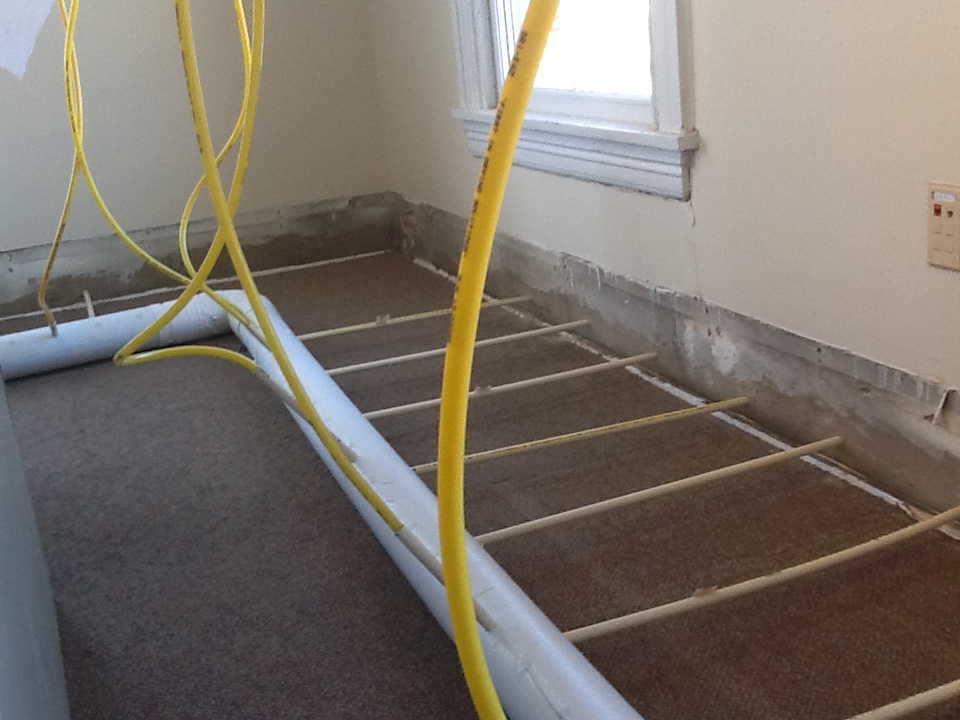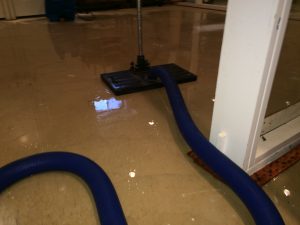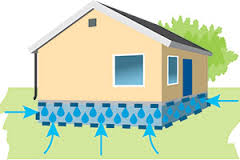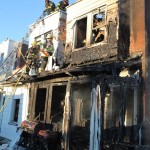Water damage describes a large number of possible losses caused by eater intruding where it will enable  attack of a material or system by destructive processes such as rotting of wood, growth, rusting of steel, de-laminating of materials such as plywood, and many others.
attack of a material or system by destructive processes such as rotting of wood, growth, rusting of steel, de-laminating of materials such as plywood, and many others.
The damage may be imperceptibly slow and minor such as water spots that could eventually mar a surface, or it may be instantaneous and catastrophic such as flooding. However fast it occurs, water damage is a major contributor to loss of property.
An insurance policy may or may not cover the costs associated with water damage and the process of Water damage restoration. While a common cause of residential water damage is often the failure of a sump pump, many homeowner’s insurance policies do not cover the associated costs without an addendum which adds to the monthly premium of the policy. Often the verbiage of this addendum is similar to “Sewer and Drain Coverage”.
As far as insurance coverage is concerned, most damage caused by bad weather is considered flood damage and normally is not covered under homeowners insurance. Coverage for bad weather would usually require flood insurance.
Categories of Water Damage
Category 1 Water – Refers to a source of water that does not pose substantial threat to humans and classified as “Clean Water“. Examples are broken water supply lines, tub or sink overflows or appliance malfunctions that involves water supply lines.
Category 2 Water – Refers to a source of water that contains a significant degree of chemical, biological or physical contaminants and causes discomfort or sickness when consumed or even exposed to. Known as “Grey Water“. This type carries micro organisms and nutrients of micro organisms. Examples are toilet bowls with urine (no feces), sump pump failures, seepage due to hydrostatic failure and water discharge from dishwashers or washing machines.
Category 3 Water – Known as “Black Water” and is grossly unsanitary. This water contains unsanitary agents, harmful bacteria and fungi, causing severe discomfort or sickness. Type 3 category are contaminated water sources that affects the indoor environment. This category includes water sources from sewage, seawater, rising water from rivers or streams, ground surface water or standing water. Category 2 Water or Grey Water that is not promptly removed from the structure and or have remained stagnant may be re classified as Category 3 Water. Toilet back flows that originates from beyond the toilet trap is considered black water contamination regardless of visible content or color.
Classes
Class of water damage is determined by the probable rate of evaporation based on the type of materials affected, or wet, in the room or space that was flooded. Determining the class of water damage is an important first step, and will determine the amount and type of equipment utilized to dry-down the structure.
Class 1 – Slow Rate of Evaporation. Affects only a portion of a room. Materials have a low permeance/porosity. Minimum moisture is absorbed by the materials.
Class 2 – Fast Rate of Evaporation. Water affects the entire room of carpet and cushion. May have wicked up the walls, but not more than 24 inches.
Class 3 – Fastest Rate of Evaporation. Water generally comes from overhead, affecting the entire area; walls, ceilings, insulation, carpet, cushion, etc.
Class 4 – Specialty Drying Situations. Involves materials with a very low permeance/porosity, such as hardwood floors, concrete, crawlspaces, plaster, etc. Drying generally requires very low specific humidity  to accomplish drying.
to accomplish drying.
Different removal methods and measures are used depending on the category of water. Due to the destructive nature of water, restoration methods also rely heavily on the amount of water, and on the amount of time the water has remained stagnant. For example, as long as carpet has not been wet for longer than 48 hours, and the water involved was not sewage based, a carpet can usually be saved; however, if the water has soaked for longer, then the carpet is probably irreparable and will have to be replaced. Water damage restoration can be performed by property management teams, building maintenance personnel, or by the homeowners themselves; however, contacting a certified professional water damage restoration specialist is often regarded as the safest way to restore water damaged property due to their training and extensive experience. Most are usually listed under “Fire and Water Restoration” and they can help speed repairs, whether for individual homeowners or for the largest of institutions. Fire and Water Restoration companies are regulated by the appropriate state’s Department of Consumer Affairs
Health hazards
Slight discolorations on the walls and ceiling may go unnoticed for a long time as they gradually spread and get more severe. Even if they are noticed, they often are ignored because it is thought that some discoloration will occur as a part of normal wear and tear in a home. Molds spread throughout the living space leading to serious health consequences. Symptoms caused by mold allergy are watery, itchy eyes, a chronic cough, headaches or migraines, difficulty breathing, rashes, tiredness, sinus problems, nasal blockage and frequent sneezing.
Secondary Damage
As defined by IICRC, Secondary Damage is the wetting or impairment of the appearance or function of a material from prolonged indirect exposure to water or indirect exposure to contamination carried by or resulting from the current water intrusion, which is reversible or permanent. An example of reversible secondary damage would be swelling or cupping and/or bowing of a wood floor. Such damage can sometimes be reversed by extracting all of the moisture through specialized equipment and proper technique. An example of permanent secondary damage would be wood rot. Such damage ruins the structural integrity of the material causing the need for replacement. Another common example of secondary damage is fungal growth or mold.


 Do you want to keep your home safe and secure? Most people think about keeping their house safe from robbers and thieves but it is also important that you keep your house safe from other natural problems like flood damage. There are many areas where flood and other water problems are rampant and therefore people need to make sure that they take good care of their house. If you are living in area where you have frequent water problems like pipe breakage water damage then you need to make sure that you are taking extra care of your house.
Do you want to keep your home safe and secure? Most people think about keeping their house safe from robbers and thieves but it is also important that you keep your house safe from other natural problems like flood damage. There are many areas where flood and other water problems are rampant and therefore people need to make sure that they take good care of their house. If you are living in area where you have frequent water problems like pipe breakage water damage then you need to make sure that you are taking extra care of your house.

 attack of a material or system by destructive processes such as rotting of wood, growth, rusting of steel, de-laminating of materials such as plywood, and many others.
attack of a material or system by destructive processes such as rotting of wood, growth, rusting of steel, de-laminating of materials such as plywood, and many others. to accomplish drying.
to accomplish drying.